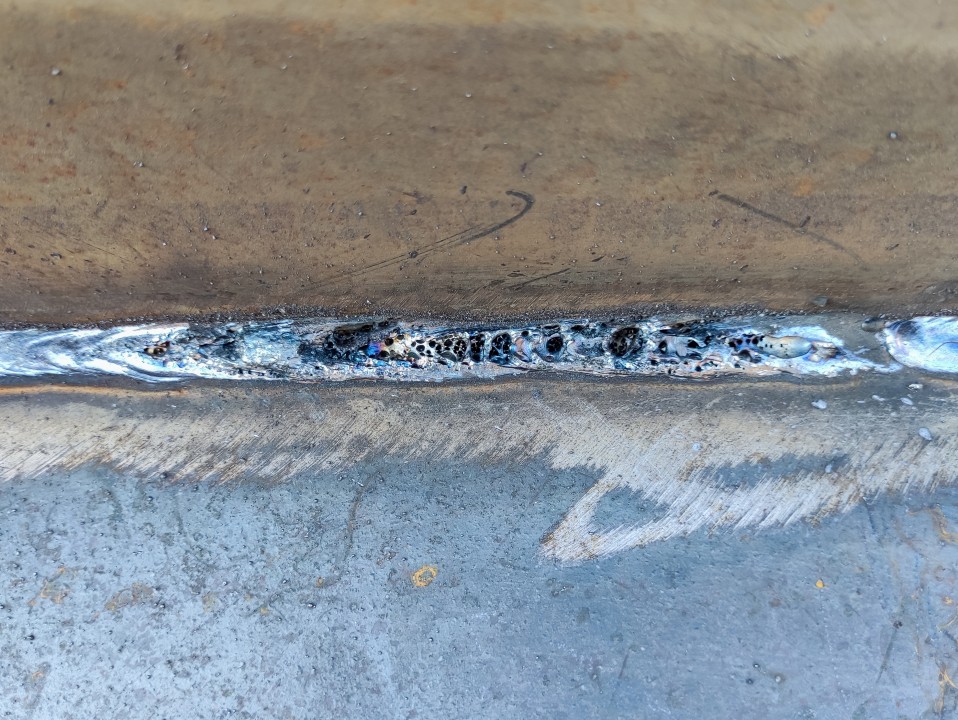Discover What is Porosity in Welding and Its Result on Architectural Honesty
Discover What is Porosity in Welding and Its Result on Architectural Honesty
Blog Article
Unwinding the Enigma of Porosity in Welding: Tips for Decreasing Defects and Optimizing Quality
In the complex world of welding, porosity remains a relentless difficulty that can considerably influence the top quality and integrity of welded joints. Comprehending the aspects that add to porosity development is critical in the pursuit of flawless welds. By deciphering the mystery of porosity and executing efficient techniques for flaw reduction, welders can raise the requirements of their work to achieve exceptional quality outcomes. As we delve into the midsts of porosity in welding, revealing the keys to its avoidance and control will be vital for professionals seeking to understand the art of high-quality weldments.
Recognizing Porosity in Welding
Porosity in welding, an usual issue encountered by welders, describes the presence of gas pockets or gaps in the welded product, which can jeopardize the integrity and top quality of the weld. These gas pockets are usually trapped throughout the welding process as a result of various variables such as incorrect shielding gas, polluted base materials, or inaccurate welding parameters. The formation of porosity can weaken the weld, making it prone to cracking and rust, ultimately causing architectural failures.
Recognizing the root triggers of porosity is crucial for welders to efficiently stop its occurrence. By acknowledging the value of maintaining appropriate gas securing, guaranteeing the tidiness of base products, and optimizing welding settings, welders can substantially lower the possibility of porosity formation. In addition, utilizing techniques like preheating the base product, using correct welding techniques, and carrying out complete inspections post-welding can further help in lessening porosity issues. On the whole, an extensive understanding of porosity in welding is necessary for welders to generate high-grade and resilient welds.

Usual Reasons of Porosity
When checking welding processes for potential top quality problems, understanding the usual causes of porosity is crucial for preserving weld integrity and preventing architectural failures. Porosity, identified by the existence of cavities or gaps in the weld metal, can significantly endanger the mechanical homes of a welded joint. One typical reason for porosity is incorrect shielding gas insurance coverage. Inadequate securing gas flow rates or inappropriate gas mixes can bring about atmospheric contamination, causing porosity formation.
Additionally, welding at improper criteria, such as exceedingly high traveling rates or currents, can create excessive disturbance in the weld swimming pool, trapping gases and triggering porosity. By dealing with these typical causes via correct gas protecting, material preparation, and Read Full Article adherence to optimum welding criteria, welders can lessen porosity and improve the quality of their welds.
Strategies for Porosity Avoidance
Executing effective preventive actions is vital in lessening the occurrence of porosity in welding procedures. One method for porosity prevention is making certain appropriate cleaning of the base steel before welding. Impurities such as oil, description grease, corrosion, and paint can bring about porosity, so comprehensive cleansing utilizing appropriate solvents or mechanical approaches is vital.

Making use of top quality filler materials and protecting gases that are ideal for the base metal and welding process can considerably minimize the threat of porosity. Additionally, maintaining appropriate welding specifications, such as voltage, existing, take a trip rate, and gas circulation price, is vital for porosity prevention.
Additionally, utilizing correct welding strategies, such as keeping a regular traveling rate, electrode angle, and arc size, can aid prevent porosity (What is Porosity). Adequate training of welders to ensure they follow best practices and quality control procedures is also important in reducing porosity problems in welding

Finest Practices for High Quality Welds
One trick method is maintaining correct cleanliness in the welding location. Thoroughly cleansing the workpiece and bordering location before welding can aid reduce these concerns.
One more ideal practice is to meticulously select the ideal welding criteria for the certain products being joined. This consists of establishing the appropriate voltage, existing, travel speed, and securing gas flow rate. Correct parameter choice makes certain optimal Homepage weld penetration, combination, and total quality. Additionally, making use of premium welding consumables, such as electrodes and filler steels, can significantly affect the final weld top quality. Buying premium consumables can lead to stronger, a lot more sturdy welds with less issues. By following these best methods, welders can constantly create premium welds that satisfy market requirements and surpass client assumptions.
Significance of Porosity Control
Porosity control plays an important function in guaranteeing the integrity and top quality of welding joints. Porosity, defined by the existence of cavities or gaps within the weld steel, can considerably compromise the mechanical properties and architectural stability of the weld. Excessive porosity damages the weld, making it much more susceptible to fracturing, rust, and overall failure under functional tons.
Efficient porosity control is crucial for preserving the preferred mechanical residential or commercial properties, such as strength, ductility, and durability, of the bonded joint. What is Porosity. By reducing porosity, welders can improve the total quality and dependability of the weld, making certain that it meets the performance demands of the intended application
Additionally, porosity control is crucial for attaining the desired aesthetic appearance of the weld. Extreme porosity not just damages the weld yet also interferes with its aesthetic allure, which can be crucial in markets where appearances are important. Proper porosity control techniques, such as utilizing the right securing gas, regulating the welding criteria, and making certain correct sanitation of the base products, are necessary for generating high-grade welds with marginal issues.

Conclusion
To conclude, porosity in welding is an usual problem that can endanger the high quality of the weld. By comprehending the sources of porosity and implementing correct prevention techniques, welders can decrease flaws and accomplish higher top quality welds. It is necessary to manage porosity in welding to ensure the honesty and stamina of the end product. Executing ideal methods for porosity control is essential for achieving ideal welding results.
Report this page